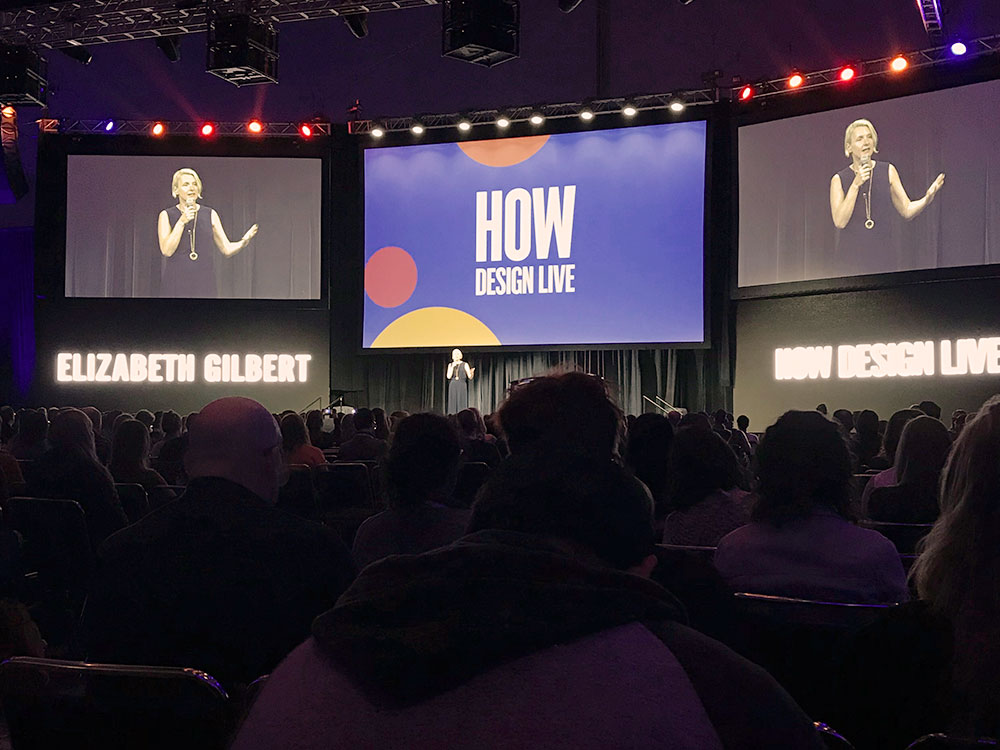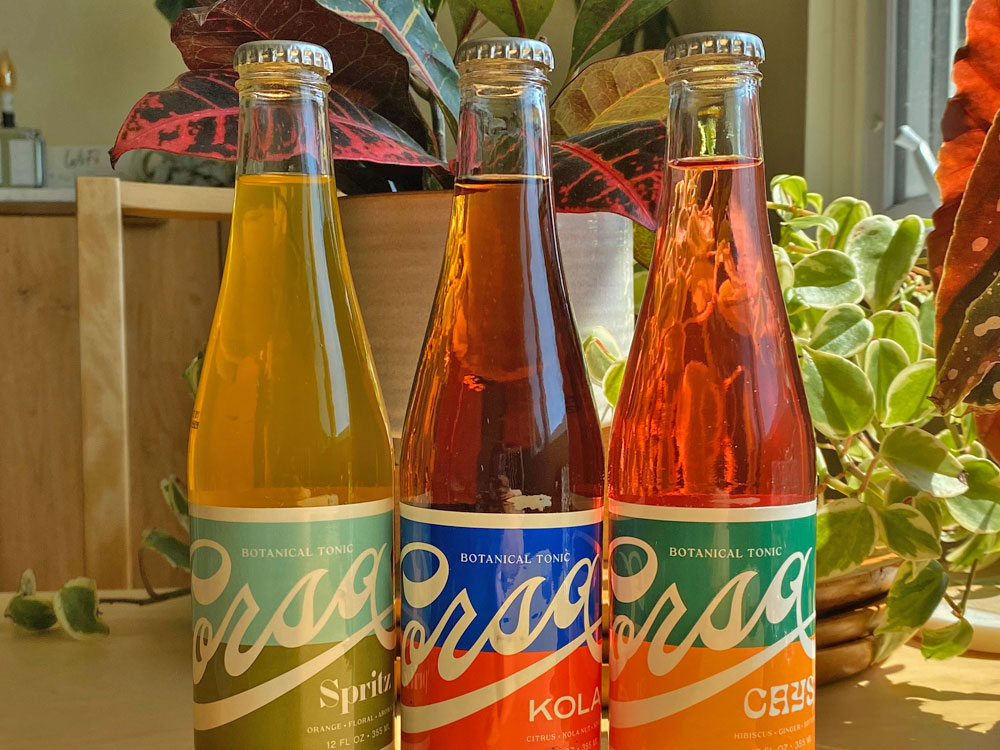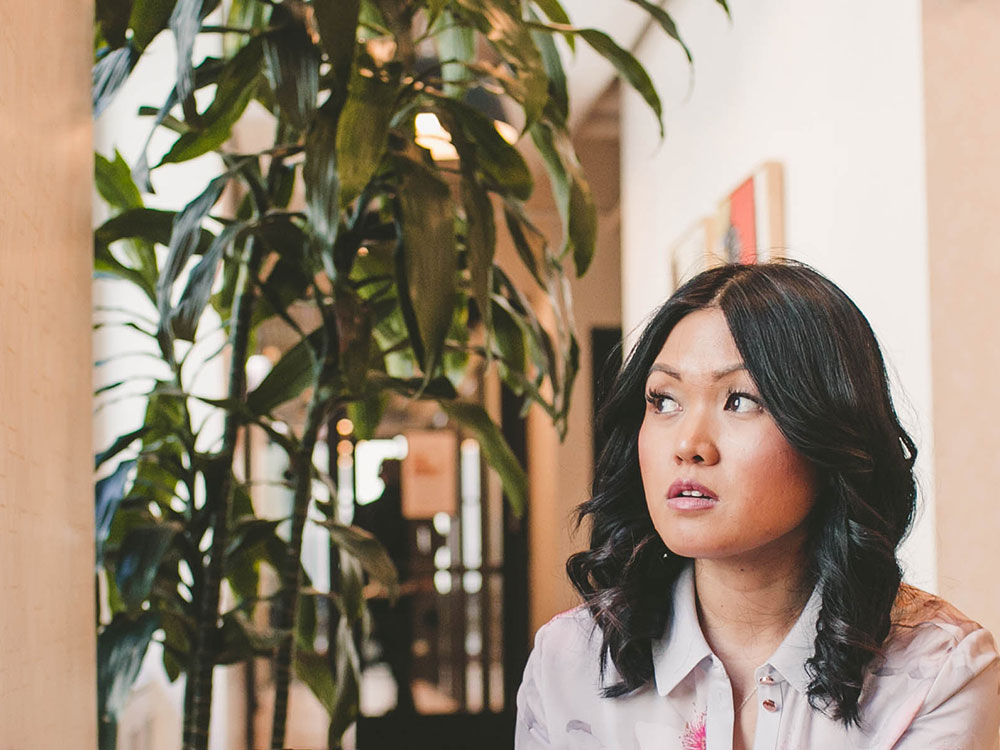Elizabeth Gilbert’s Formula for Creative Living

Elizabeth Gilbert at HOW Design Live, Chicago, 2019
I wasn’t sure what the author of ‘Eat Pray Love’ would be able to tell me about how I could live more creatively within my admittedly self-centered world of branding, but before I knew it, I was more inspired than ever.
A speaker at HOW Design Live, Elizabeth Gilbert opened her presentation by telling us a story about her early days as a struggling writer (read: waitress) in New York. She had a million jobs but no time to write. Or so she lamented to her mentor, who listened patiently before she chipped away at Elizabeth’s self-defeat.
The mentor asked Elizabeth questions like, “What’s your favorite TV show?”
(“Seinfeld.”)
“Oh, that’s nice you have time to watch that. What are some magazines you subscribe to?”
(“New Yorker, Vanity Fair…”)
“Oh, that’s nice you have time to read those. Where are you going on vacation this summer?”
(“To the Jersey Shore to rent a house with a bunch of my friends.”)
“No, you’re not.”
The mentor then asked Elizabeth the question we should be asking ourselves:
“What are you willing to give up to get the life you keep pretending you want?”
“Pretending.” Pretending! Understandably, that’s the word that stabbed Elizabeth the deepest. And I felt her pain. How many of us have complained about the same thing? It’s understandable, but all so sadly common and defeatist, like we really truly have no control of how we spend our time.
“Okay, I get it,” Elizabeth conceded. “I have to say ‘no’ to the things I don’t want to do.”
“Oh no, honey,” Elizabeth’s mentor cooed, “It’s so much worse than that.”
“You have to say ‘no’ to the things you LOVE to do.”
The key for creative living according to Elizabeth is to be relaxed.
“The most relaxed person in the room is the one with all the power.”
She has 3 steps to make that happen:
- Priorities
- Boundaries
- Mysticism
1.) Priorities
Get used to the words, “I don’t care.” These are words for everything that is NOT a priority. We have just this one life and one energy stream, and we have to protect it. Time is the most valuable commodity, even more than money. To paraphrase YouTubers Casey Neistat and Amy Landino, “We all get the same amount of time, and once we spend it, we can never get it back.”
2.) Boundaries
It’s important to follow step 1, because you cannot have boundaries if you don’t know what your priorities are. And it doesn’t have to be a hard wall, but you do have to figure out what it is that you find sacred. The ultimate boundary is to put a circle around yourself.
Here’s a real actionable item that Elizabeth stated in her talk that you can do for yourself right now:
You only get 1 or 2 good hours in a day. You know that feeling. It’s when you’re at your sharpest and most focused. What time are your good hours?
Next, ask yourself, who or what currently gets those hours? Is it your phone? Social media? Work? Your children?
Give those 2 hours to whoever or whatever your priority is.
Do that, and then the rest of the world can get your 2nd rate self the rest of the day, and they won’t even know it. Give yourself this gift.
I know for me, those hours are between 4–7am. Last year, when I was doing a weekly upload to YouTube to my channel, I was super good about dedicating that time to editing. But my priorities have shifted, and I lost sight of what to do with those hours. Thanks to Elizabeth’s talk and some soul-searching, I’m writing this blog post during my magic hours, when I’m at my sharpest and no one steal my attention with a text, email, or phone call. Priorities. Boundaries.
3.) Mysticism
This last step comes when you’ve determined your priorities and set your boundaries. Doing those 1st two essential steps allows you to become relaxed, and your relaxed state allows for creativity to happen. Creativity happens because of mysticism. And Elizabeth conceded that the term does tend to make people uncomfortable, as it is commonly associated with religion, but it doesn’t have to be.
“Creativity and the supernatural are connected.”
Elizabeth described 2 types of creativity, and we’ve all definitely experienced both:
1st version of creativity: The laboring kind, where we beat it out of ourselves, pushing and pushing until something emerges. We may or may not love it.
2nd version of creativity: The easy kind, where it’s like riding a slip stream of creativity, like riding an airport moving walkway. We tend to love this kind more readily.
It was through this 2nd version of creativity that Elizabeth had come up with a theory:
Ideas have an unstoppable energy force.
Ideas are a disembodied consciousness looking for a host, a mother. The work wants to be made, and it wants to be made through you.
She then told this incredible story about how she was inspired to create this compelling plot for her next book about a protagonist who was a spinster, hopelessly in love with her boss, who ends up in the Amazon where a story of adventure, love, and mystery unfold. Unfortunately, due to life circumstances (What kind? Oh, you know, the kind where you and your husband at the time are deported), she paused writing the book and put her research and work in a box.
Years later, she was able to revisit the story, but when she opened up the box, the story was dead. The life was gone. Elizabeth was not compelled to finish the story. Soon after this, when connecting with fellow author Ann Patchett over a meal, Ann excitedly relayed her next project: It was about a protagonist who was a spinster, hopelessly in love with her boss, who ends up in the Amazon where a story of adventure, love, and mystery unfold.
Elizabeth and Ann were astounded.
As part of the captive audience, I was astounded. This canNOT be true. After all Elizabeth is a story teller. But my disbelief was suspended, because the story is just too good.
Elizabeth went on to say she could’ve let her heart rot by theorizing that Ann had somehow – however inexplicable – stolen her idea. She also could have cursed God and claimed He loved Ann more than her. But, Elizabeth’s faith in this process – this supernatural mysticism that ideas are meant to live and find a host-mother who will breathe life into its existence – reinforced her love for the process, making her the most relaxed person in the room.
Now, ask yourself, are you the most relaxed person in the room?
Also ask yourself, what time of the day are your best hours, and what will you give that time to?


